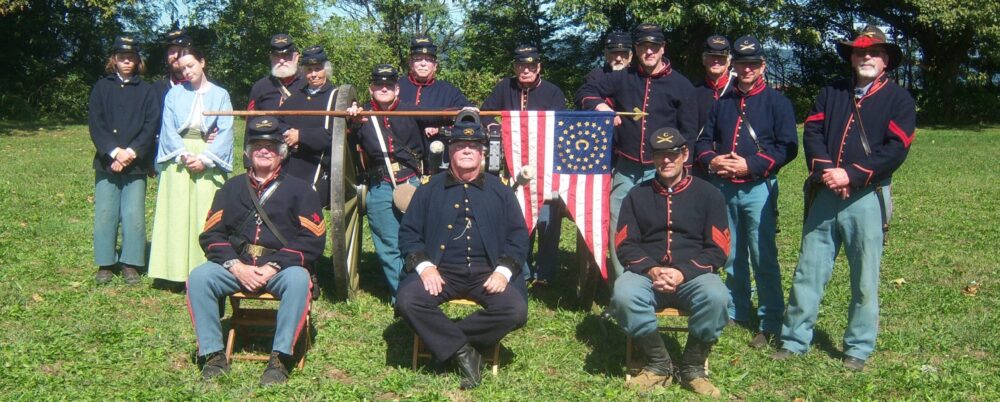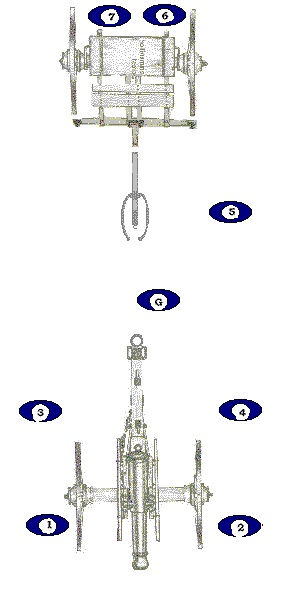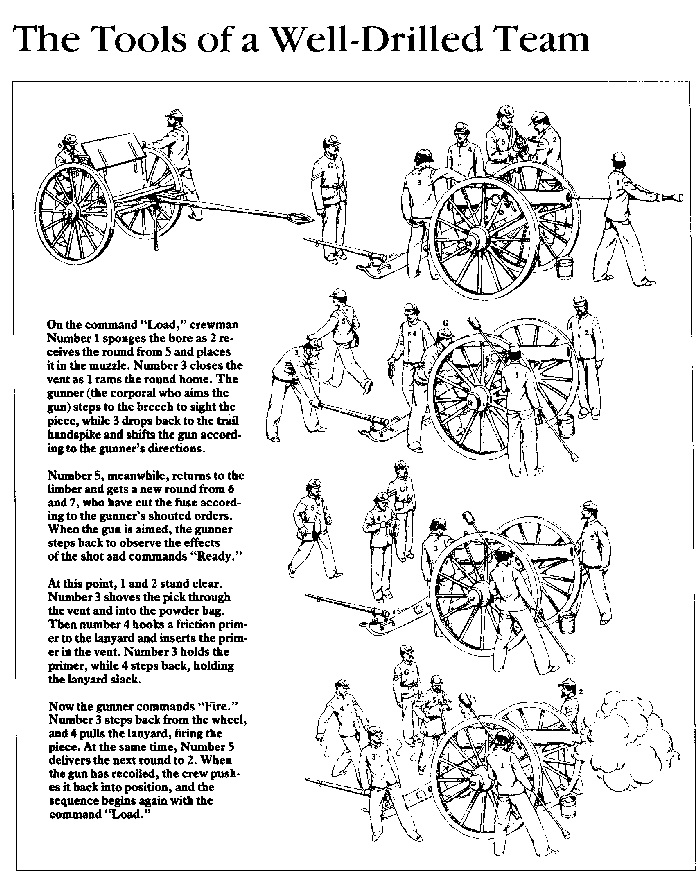Ross M. Kimmel stated “A well drilled artillery battery, like a choreographed ballet, had no wasted parts or movement!”
With a dozen six-horse teams operating at close quarters and breakneck speed, and fifty cannoneers pelting after them to unlimber the guns and take their posts, a battery’s evolutions were a spectacle that could not be rivaled even by the gaudiest of cavalry reviews. The horse drill is described in detail in Artillery for the United States Land Service. After the guns were unlimbered and the cannoneers at their posts, firing drill commenced:
This diagram shows the positions of the gunner and cannoneers with the piece unlimbered. The process begins with the gunner’s command for the type of ammunition and the range; Number 6 assisted by Numbers 7 and 8, at the limber chest, calls out the elevation and cuts the fuzes. At the command “Load”, Number 1 steps to the muzzle with the rammer held parallel to the bore. Number 5 is given a round of ammunition by Number 6 or 7, and delivers the round to Number 2, who inserts it in the bore, where Number 1 rams it home. While this is taking place, Number 3 covers the vent with his thumb, wearing a protective leather thumbstall. The Gunner then sights the piece, operating the elevating screw to set the range, and directing Number 3, now on the handspike, in setting the aim.
After sighting and loading, at the command “Ready”, Number 3 pricks the charge with a vent pick, and Number 4 hooks the lanyard to a friction primer and inserts the primer in the vent. At the command “Fire”, Number 4 pulls the lanyard and the piece is discharged. The cannon is then run back into position; Number 1 sponges the piece and the process can begin again. A battery of well-trained cannoneers could fire two or even three rounds a minute, especially under combat conditions when they skipped sponging.
Especially under combat conditions, a gun crew might need to operate a piece with fewer than a full complement of cannoneers, and in theory a cannon could continue in service with only two men. The following table, taken from the 1864 Instruction for Field Artillery, shows which cannoneers would perform which duties under these circumstances.


